Fix: Office 2016 Grant Access Error on MacOS
A lot of MacOS users are receiving the Grant File Access error when trying to open various file types in Office 2016. The issue typically appears when trying to open Word files, but some users have also reported the issue with Excel and PowerPoint files.
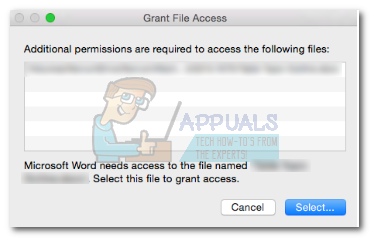
When dealing with this issue, the user will be prompted with a popup asking to provide access privileges when opening a file with an Office 2016 program. If the user selects the file and clicks the Grant Access button, the following error will appear:
Word/Excel/PowerPoint cannot open the document: user does not have access privileges.
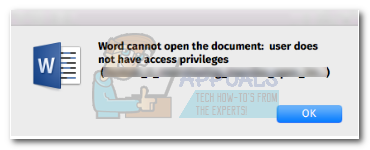
As it turns out, the Grant Access error is caused by the updated Apple sandboxing rules. Apple now uses sandboxing to limit various actions by tying them to a specific location. Application sandboxing is very effective in preventing viruses or other malware from affecting OS files. Following the new guidelines, every application that uses custom fonts must ensure that the fonts stay exclusive to that particular application. Apple no longer allows an application to install fonts for system-wide use.
In the event that a system-wide font gets altered along the way, it will be regarded as a security violation and will be replaced at the next update. Starting with Office 2016, Microsoft had to comply with Apple’s rules in order to be able to sell the Office suite in the App Store. Microsoft provides a set of fonts specifically for their software, which will get installed in a different location.
However, most third-party font utilities have not been fully updated to work with the new sandbox rules and will cause conflicts seen as security violations by MacOS. It has been confirmed that third-party font management apps like Suitcase, Linotype Font Explorer, Extense, or FontExplorer X are the main culprits causing the Grant Access error with the Office 2016 suite. As of now, FontBook is the only font management utility that is specifically designed to work with Apple’s new security system.
Note: Some users have reported that reducing the number of fonts in their third-party font management apps has made the issue disappear. If you have a lot of fonts (over 1000), try reducing their number. Then, restart your machine and try again.
Below are a suite of methods that will make the Grant Access error go away. If you have installed an external font management app (other than FontBook), but you don’t need it, follow Method 1 or Method 2. In the event that you’re relying on a third-party font management app, follow Method 3 or Method 4.
Update: We’ve added another method that will address the Grant Access error for users who are encountering the issue with macOS 10.13 High Sierra or above. If this is applicable, move directly to Method 5.
Method 1: Disable fonts from third-party font management apps
Since font management apps like FontExplorer X, Universal Type Server, Suitcase, or Extense are causing the Grant Access error, disabling the fonts in those applications will usually make the issue go away for good.
If you’re using Suitcase Fusion, you can solve this issue easily by clearing the font caches. To do this, open Suitcase Fusion and go to File > Clean Font Caches. Then, restart your system and the office files should open normally.
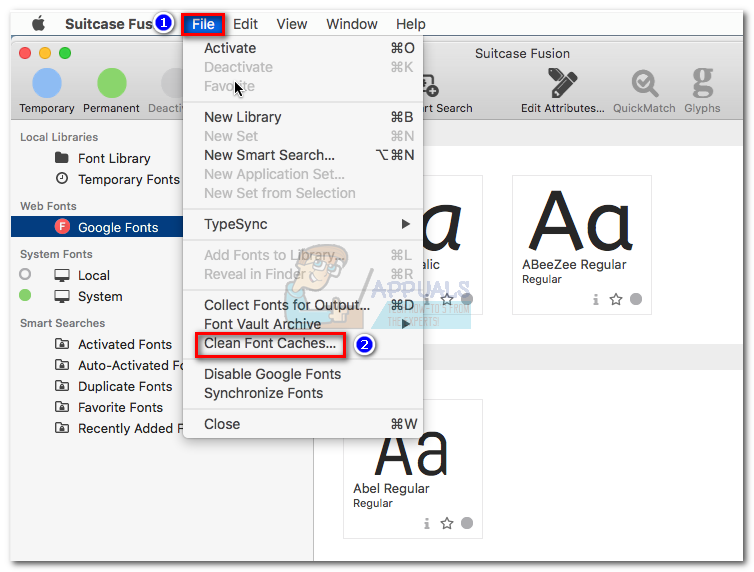
Note: This fix will only work temporarily. You might be required to repeat the procedure every once in a while.
If you’re using FontExplorer X, Universal Type Server or Extense, you have little choice but to open those applications and disable all fonts. Then, restart your device and try opening the files that were previously showing the error. If that isn’t enough, uninstall the external font management app and follow the instructions below:
- Access the Finder app, select Applications and double-click on FontBook.
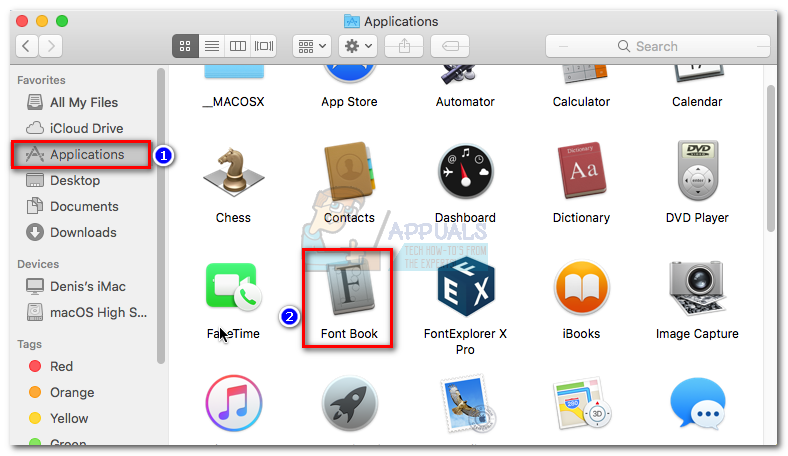
- In FontBook, select All Fonts from the left pane. Then, select any font from the right pane and hold down Command + A to select them all.

- With all the fonts selected, access the Edit menu on the top of the window and click on Look for Enabled Duplicates.

- Click on Resolve Manually and wait for the list to populate. Shortly after that, you’ll see a window listing the fonts that were checked. Then, click the All header and switch it to Warnings and Errors.

- Open each font shown as duplicated. You should be able to view both versions. Choose the oldest font and hit Remove Checked. Do this with all the fonts that are duplicated.
Note: The “Remove Checked” has been changed to “Resolve Checked” in the newer version and you must check the fonts that you want to keep, not the ones that you want to remove. - Next, go to File and choose to Validate Fonts. Click the All header and change it to Warnings and Errors.

- If you encounter any errors (yellow or red), open each one and resolve any duplicate manually like we did in Step 5. Once you have covered each duplicate, click on Validate Fonts again and make sure no errors are shown.

- Close FontBook and open any application affected by the Grant Access error. If it’s still displaying the error, reboot and open again.
Method 2: Boot from recovery partition to reset folder permissions
If the method above has been unsuccessful in removing the Grant Access error, let’s try booting from recovery mode and using the Terminal utility to reset the folder permissions and ACLs. This method has proved to be successful for a lot of users that were still struggling with the error after removing the third-party font manager.
- Click the Apple icon in the top-left corner and select Restart. While your Mac is restarting, press and hold Command + R to enter Recovery mode.

- Once you see the OS X Utilities window, access the Utilities menu at the top of the screen and click on Terminal.

- In the Terminal window, type “resetpassword” and press Enter.

- Shortly after that, you’ll see the Reset Password window. Go down to Reset Home Folder Permissions and ACLs and click the Reset button.

- You might be prompted to insert your password. After you do so, the system will restart.
- Try opening the Office app that was previously acting up. It should open without the Grant Access error.
Note: The issue will reappear if you decide to install and open a third-party font management app that doesn’t comply with Apple’s sandbox rules.
Method 3: Avoid Apple’s sandbox requirements
In previous Mac Office versions (older than Office 2016), users were able to save files in any location and use any font without warnings and permission requests. But this is no longer possible because of the new sandbox requirements. People that use VBA with Excel are severely affected since they are constantly prompted for permissions when running their scripts.
However, Mac has some locations that you can use to avoid those access prompts. These locations allow VBA enthusiasts to run their scripts freely without additional user interaction. Fortunately, we can also use these locations to bypass the grant access error. The trick is, this location is not easily available, so we’ll have to go through additional steps to make it more accessible.
One example of a safe location that avoids Office permission prompts is: /Users/*YourUsername*/Library/Group Containers/UBF8T346G9.Office
You can use this folder to share data between Office programs or with a third-party application since it has both read and write access. Here’s a quick guide on using this location to bypass the Grant Access error:
Note: This guide is only confirmed to work with Excel files, but should theoretically work with other file types from the Office 2016 suite.
- Open a Finder window and hold the Alt key while pressing the Go tab in the menu bar. Then, click on Library.

- Navigate to Group Containers and then double-click on the UBF8T346G9.Office folder.

- Create a new folder inside the UBF8T346G9.Office folder and name it however you want.
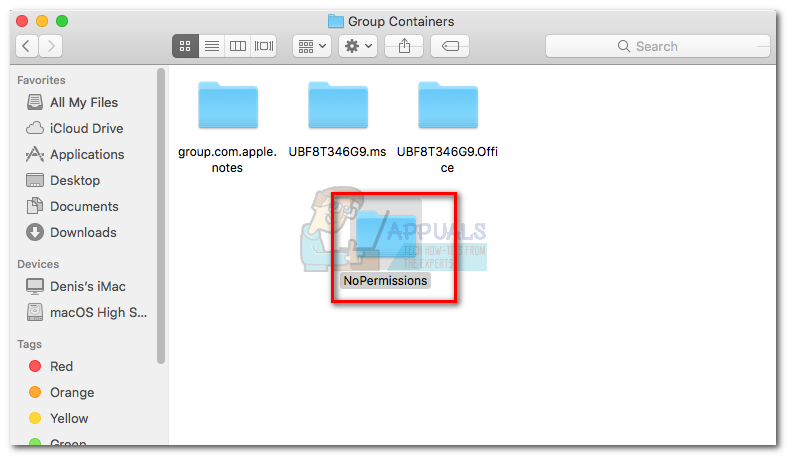
- Next, move all the Office-related files that are refusing to open in this secure folder. They should all open without issues.
Note: For easy access, you can select the folder and press Command + Ctrl + T to automatically add it to Favorites in Finder.

Method 4: Pull Microsoft fonts from the resource folder (Temporary)
If your work revolves around using an external font management app, then removing it from your system is not an option. Fortunately, some users have been able to make the grant permissions issue go away by removing Microsoft’s fonts from the resource folder. However, this fix will only be temporary. When you allow the next Office update, the fonts will get reinstalled in the package and the error will come back.
Warning: Some users have reported Word crashes after following this method. If you don’t back up the fonts as we’ll do in the steps below, you’ll need to reinstall/repair the Office suite if anything goes wrong.
- Access the Finder app and select Applications. Then, right-click on the Office application that is displaying the Grant access error and click on Show Package Contents. In this case, it’s Word, but you can also do it with Excel, PowerPoint, or another Microsoft Office app.

- Go to Contents > Resources and locate the Fonts folder. You might see it as Fonts or DFonts. Double-click on it to open.
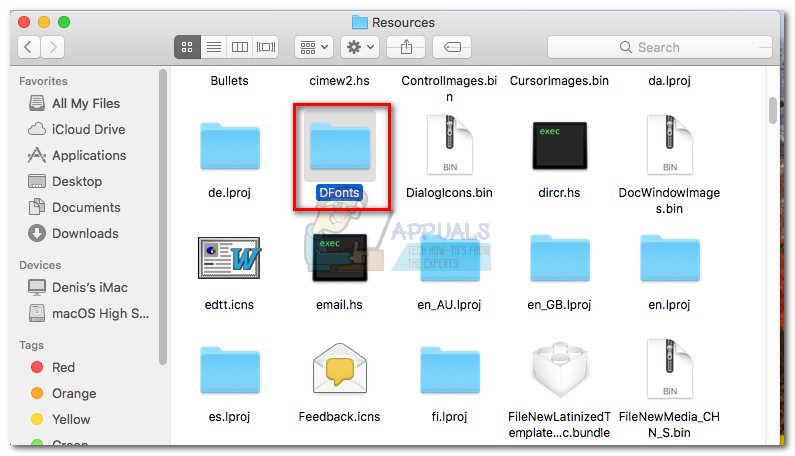
- Next, create a folder on your desktop. We’ll use it to safeguard the MS fonts, so we can restore them if this method fails. Use Command + A to select all fonts from Dfonts and move them to the folder you previously created.

- After you have successfully copied the fonts to the new folder, right-click one of the fonts in Dfonts and click Move to Trash.
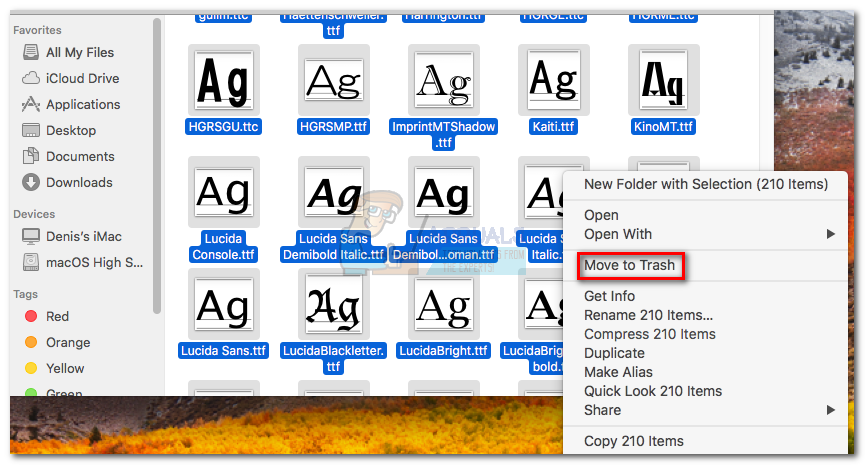
- Once the Dfonts folder is empty, open the Office application that was displaying the Grant access error. It should open normally now.Note: If you’re still seeing the error, or Word crashes during startup, return to Contents > Resources > DFonts(Fonts) and re-add the fonts from the folder we previously created.
Method 5: Clear the Mac OS Font Caches via Terminal
Some affected users that have been encountering this issue with macOS 10.13 High Sierra or above have reported that the issue has been resolved after they cleaned the font caches by using the Terminal. After doing this and restarting their Mac, most affected users have reported that the Grant access error has stopped occurring.
- Close all applications that are currently opened. To do this, press Command + Option + Escape to open the Force Quit Application window. Then, select each opened app and click on the Force Quit button.
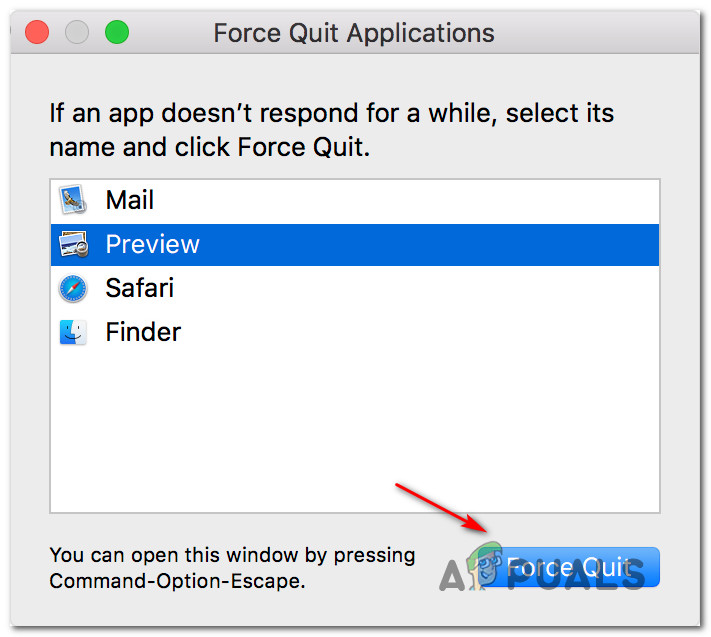
Force Quit all opened apps Note: This step is very important. Failing to do so will result in an error if an application that is using the font caches is currently opened.
- Once every application is closed, press Command + Shift + U to open the Utility folder and click on Terminal to start it.
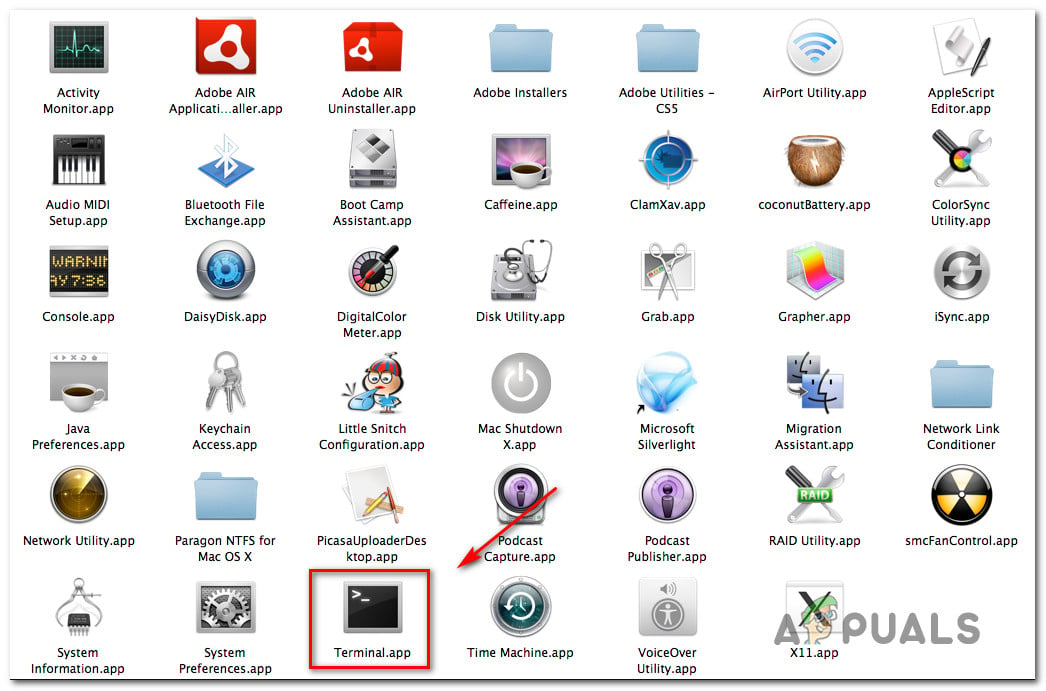
Accessing the Terminal via Utility folder - Type the following command and press Return to run it:
sudo atsutil databases -remove
- You will be asked to provide your account password at the prompt. Do so and press Return once again to grant the necessary permissions.
- When the process is complete, type exit to end your command line session, then go to File > Quit to exit the Terminal app.
- Restart your Macintosh and the issue should be resolved at the next system startup.